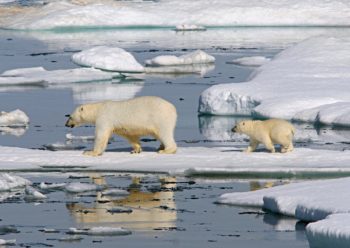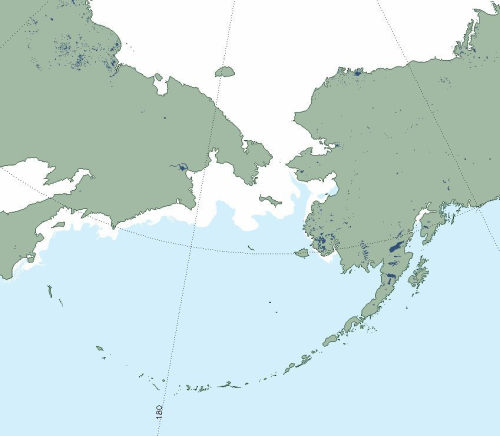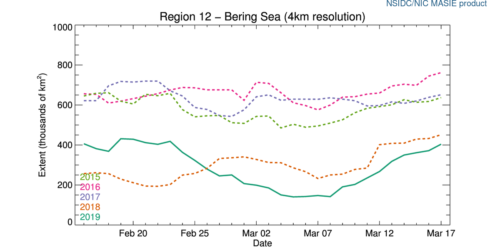
According to researcher Rick Thoman from the University of Alaska Fairbanks, quoted by the Canadian Press:
“Wind blew ice to Russian beaches in the west and to the south side of Norton Sound south of Nome but left open water all the way to Chukchi Sea north of the Bering Strait.”
Polar bears that venture into the Bering Sea are part of the Chukchi Sea subpopulation, which is known to be thriving (Crockford 2019; AC SWG 2018; Regehr et al. 2018; Rode and Regehr 2010; Rode et al. 2013, 2014, 2015, 2018).
WHAT HAPPENED

In late February, ice in the Bering Sea (south of the Bering Strait) receded rather rapidly. By early March, a number of folks were in full-blown panic mode:
The Bering Strait should be covered in ice, but it’s nearly all gone (Mashable, 4 March 2019, Mark Kaufman).
In the Middle of Winter, Bering Strait Sea Ice Is Disappearing(Bloomberg, 6 March 2019, Jeremy Hodges).
There’s open water where sea ice historically covers much of Bering Sea off Alaska’s west coast (Canadian Press/GlobalNews, 5 March 2019, Dan Joling).
You could almost see the ice streaming north into the Chukchi Sea by the 5 March:
5 March 2019
However, by 17 March it was all back:
17 March 2019
Here’s the recovery in graphic form, track the dark green line (to 17 March 2019):
Bottom line: The ice will retreat north as spring progresses, of course, so the current level shouldn’t be expected to remain static.
Less ice near the Alaska coast may make it difficult for polar bear specialists to do their spring surveys but is unlikely to cause trouble for the bears themselves. The seals follow the ice as it moves in the spring: the bears follow the seals.
Read more and references at Polar Bear Science



















